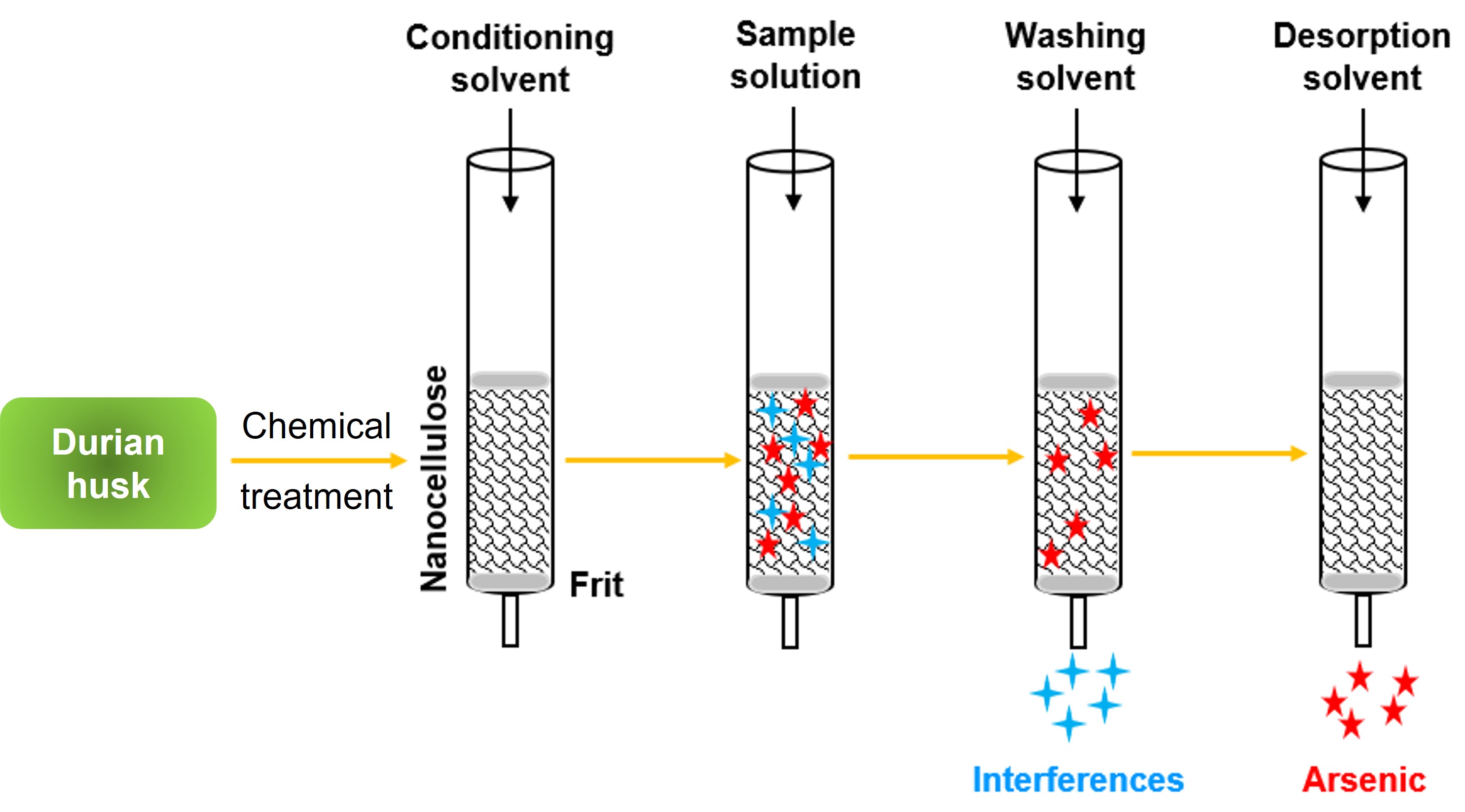- gnest_05303_published.pdf
-
Paper IDgnest_05303
-
Paper statusPublished

In the present study, nanocellulose was successfully extracted from durian husk via chemical treatment and then characterized by several analytical techniques, involving X-ray diffraction (XRD), Fourier-transform infrared spectroscopy (FT-IR), energy-dispersive X-ray spectroscopy (EDX) and transmission electron microscopy (TEM). Nanocellulose was obtained with a crystallinity index of 77% and in the form of cellulose nanofibrils (30 nm in width and micrometers in length). Using nanocellulose as a biosorbent in solid-phase extraction technique, the inorganic arsenic ions were eluted using 0.1 M HNO3 and its content in the eluate solution was quantified by hydride generation-flame atomic absorption spectrometry (HG-FAAS), in which the recovery of arsenic ions using nanocellulose were assessed via contact time, pH and dosage of sorbent, reaching the equilibrium after 30 minutes. With the limit of detection (LOD) of 0.41 ng mL-1, the limit of quantification (LOQ) of 1.38 ng mL-1 and the relative standard deviation of repeatability (%RSD) of 3.44% (with ten replicates) for arsenic determination, the present method was practiced with the trace inorganic arsenic quantification in real samples (fish sauce with various protein levels) with reliable spike recoveries.
Total file downloads: 9